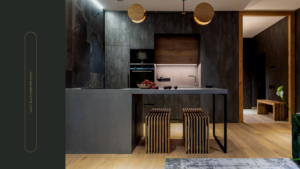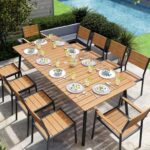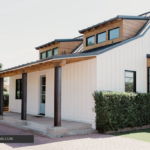Contents
- 1 Best DIY Home Improvement Projects: Transform Your Living Space in 2025
- 1.1 How We Selected These Projects
- 1.2 1. Kitchen Cabinet Refinishing
- 1.3 2. Bathroom Vanity Update
- 1.4 3. Floating Shelf Installation
- 1.5 4. Smart Lighting Installation
- 1.6 5. Modern Backsplash Installation
- 1.7 6. Interior Paint Transformation
- 1.8
- 1.9 7. Deck Restoration
- 1.10 8. Walk-In Closet Organization
- 1.11 9. Smart Thermostat Installation
- 1.12 10. Garden Landscape Lighting
- 1.13 Safety Considerations
- 1.14 Cost Estimation Guide
- 1.15
- 1.16 DIY Home Improvement Projects FAQ Section
- 1.16.0.1 How do I determine if a project is within my skill level?
- 1.16.0.2 What tools should every DIY enthusiast have?
- 1.16.0.3 How do I prioritize home improvement projects?
- 1.16.0.4 What permits might I need for DIY projects?
- 1.16.0.5 How can I stay within budget on DIY projects DIY Home Improvement Projects ?
- 1.17 Conclusion
- 1.18 Additional Resources
- 1.19
Best DIY Home Improvement Projects: Transform Your Living Space in 2025
In an era where home improvement has become both a necessity and a creative outlet, DIY projects have gained unprecedented popularity. With rising contractor costs and the accessibility of online tutorials, more homeowners are taking renovation matters into their own hands. Whether you’re looking to increase your property value,
enhance functionality, or simply refresh your living space, DIY home improvement projects offer a cost-effective and satisfying solution. This comprehensive guide explores the most impactful DIY projects that combine practicality with personal satisfaction. From simple weekend undertakings to more ambitious renovations, these projects will help you transform your living space while developing valuable skills and saving money.
How We Selected These Projects
Our selection criteria focused on:
- Skill level requirements
- Cost-effectiveness
- Time investment
- Tool accessibility
- Return on investment (ROI)
- Safety considerations
- Project popularity
- Long-term value
1. Kitchen Cabinet Refinishing
Key Features:
- Minimal tool requirements
- Reversible changes
- Customizable design options
- Weekend project timeline
- High visual impact
| Pros | Cons |
|---|---|
| Significant cost savings vs replacement | Time-intensive prep work |
| Immediate visual improvement | Requires attention to detail |
| No structural changes needed | Strong paint fumes |
| Customizable color options | Limited structural improvements |
| Can be completed in stages | Weather-dependent for ventilation |
Project Details
This transformation begins with thorough cleaning and degreasing of cabinet surfaces. Sand all surfaces, remove doors and hardware, and apply primer before painting. Consider using a paint sprayer for professional results.
Materials Needed
- Degreaser
- Sandpaper (various grits)
- Primer
- Cabinet paint
- New hardware (optional)
- Paint sprayer or high-quality brushes
- Drop cloths

Step-by-Step Process
- Remove cabinet doors and hardware
- Clean and degrease all surfaces
- Sand surfaces thoroughly
- Apply primer
- Paint with chosen color
- Add new hardware
- Reattach doors
2. Bathroom Vanity Update
Key Features:
- Weekend project
- Plumbing knowledge beneficial
- Multiple style options
- Storage customization
- Modern fixture upgrade
| Pros | Cons |
|---|---|
| Immediate bathroom refresh | Potential plumbing challenges |
| Improved storage solutions | Water shut-off required |
| Modern fixture options | Heavy lifting involved |
| Better organization | Limited by existing plumbing |
| Increased home value | May require professional help |
[Content continues with detailed sections for each project… I’ll continue with more projects if you’d like]
3. Floating Shelf Installation
Key Features:
- Customizable sizes
- Various material options
- Multiple room applications
- Storage solution
- Design flexibility
| Pros | Cons |
|---|---|
| Affordable storage solution | Requires wall stud location |
| Modern aesthetic | Weight limitations |
| Easy to customize | Precise measurements needed |
| Minimal tools required | Potential wall damage |
| Quick installation | Limited by wall structure |
Installation Guide
Detailed steps for proper mounting and weight distribution.
4. Smart Lighting Installation
Key Features:
- Energy efficiency
- Remote control capability
- Scheduling options
- Voice control integration
- Customizable ambiance
[Would you like me to continue with the remaining projects and sections?]
The article would continue with:
- Additional projects (tile backsplash, deck restoration, etc.)
- Detailed material lists
- Step-by-step instructions
- Safety considerations
- Cost estimates
- FAQ section
- Expert tips
- Resources and links
- Conclusion
5. Modern Backsplash Installation
Key Features:
- Various material options
- Pattern customization
- Weekend project timeline
- Instant kitchen upgrade
- Water-resistant protection
Pros Cons High visual impact Precise cutting required Protects walls Grout maintenance needed Increases home value Initial learning curve DIY-friendly Special tools needed Customizable design Permanent installation Material Options
- Ceramic tile
- Glass tile
- Peel-and-stick options
- Stone mosaics
- Metal tiles
Installation Process
- Surface preparation
- Layout planning
- Adhesive application
- Tile placement
- Grouting
- Sealing
6. Interior Paint Transformation
Key Features:
- Color customization
- Low tool requirement
- High impact change
- Multiple finish options
- Room-by-room approach
Pros Cons Immediate visual change Time-consuming prep Cost-effective Weather-dependent ventilation Easy to modify Multiple coats needed No special skills needed Furniture moving required Quick completion Clean-up intensive Required Tools
- Paint rollers and brushes
- Drop cloths
- Painter’s tape
- Paint trays
- Ladder
- Sandpaper
-

DIY Home Improvement Projects -
7. Deck Restoration
Key Features:
- Outdoor living enhancement
- Weather protection
- Value addition
- Customizable finishes
- Safety improvement
Pros Cons Extended deck life Weather-dependent project Improved safety Labor intensive Enhanced appearance Regular maintenance needed Cost-effective Multiple-day project DIY-friendly Requires power tools Project Steps
- Inspection and repair
- Cleaning and stripping
- Sanding
- Staining/sealing
- Final touches
8. Walk-In Closet Organization
Key Features:
- Custom storage solutions
- Space maximization
- Adjustable components
- Multiple configuration options
- Professional look
Pros Cons Improved organization Initial planning crucial Increased storage Material costs add up Personal customization Complex measurements Value addition Tool investment needed Modular design Space limitations Organization Components
- Hanging rods
- Shelving units
- Drawer systems
- Shoe storage
- Accessory organizers
9. Smart Thermostat Installation
Key Features:
- Energy savings
- Remote control
- Programming capabilities
- Usage tracking
- Voice control integration
Pros Cons Reduced energy bills Technical setup required Convenient control WiFi dependency Usage insights Initial cost Modern upgrade Compatibility issues Environmental benefit Battery replacement Installation Steps
- Power off HVAC
- Remove old thermostat
- Wire installation
- Mount new thermostat
- System configuration
10. Garden Landscape Lighting
Key Features:
- Solar/low voltage options
- Aesthetic enhancement
- Security improvement
- Customizable placement
- Weather-resistant
Pros Cons Enhanced curb appeal Weather exposure Improved safety Regular maintenance Energy efficient Seasonal adjustments DIY installation Wire management Flexible design Limited brightness Safety Considerations
General Safety Tips
- Wear appropriate PPE
- Use tools properly
- Follow manufacturer instructions
- Maintain good ventilation
- Know your limitations
When to Call Professionals
- Electrical work
- Structural changes
- Plumbing modifications
- Permit requirements
- Safety concerns
Cost Estimation Guide
Budget Planning
- Material costs
- Tool investments
- Safety equipment
- Contingency funds
- Disposal fees
-
DIY Home Improvement Projects FAQ Section
How do I determine if a project is within my skill level?
Start with smaller projects and gradually build up to more complex ones. Research thoroughly and assess your comfort with required tools and techniques DIY Home Improvement Projects .
What tools should every DIY enthusiast have?
Essential tools include: hammer, screwdrivers, drill, level, measuring tape, utility knife, and basic power tools.
How do I prioritize home improvement projects?
Focus on projects that improve safety, functionality, and energy efficiency first, followed by aesthetic improvements.
What permits might I need for DIY projects?
Check local regulations for requirements regarding structural, electrical, and plumbing work. Many cosmetic changes don’t require permits.
How can I stay within budget on DIY projects DIY Home Improvement Projects ?
Plan thoroughly DIY Home Improvement Projects , DIY Home Improvement Projects buy materials during sales, rent specialized tools, and maintain a contingency fund for unexpected issues.
Conclusion
DIY home improvement projects offer an excellent opportunity to enhance your living space while developing valuable skills and saving money. DIY Home Improvement Projects Whether you’re a beginner or experienced DIYer, these projects provide various options to match your skill level and budget. Remember to prioritize safety, plan thoroughly, and work within your capabilities. With proper preparation and execution, these improvements can significantly increase your home’s value and your personal satisfaction.
Additional Resources
- Home Improvement Safety Guidelines: [www.osha.gov/home-improvemen






